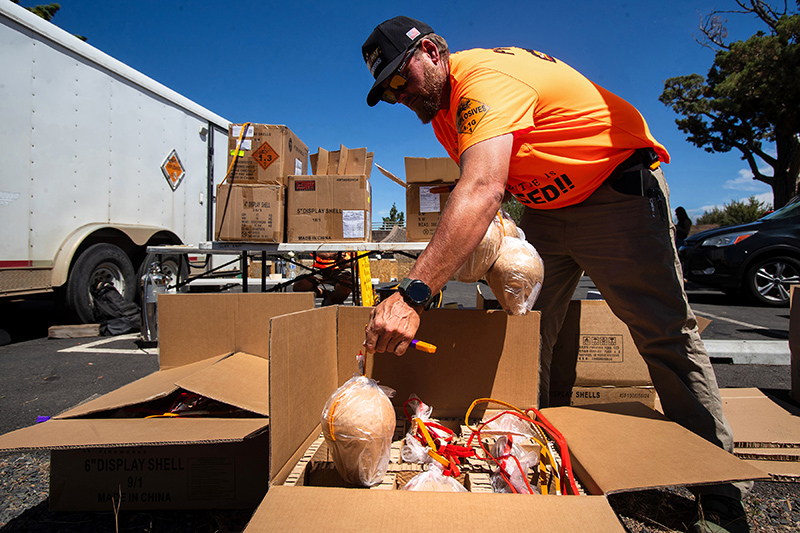The California dream is tough if you’re under 40
Published 12:00 am Sunday, February 25, 2018

- Joe Rivano Barros, 25, a renter in San Francisco’s Mission District who shares a single-family home with nine other roommates, heads to work at YIMBY, a pro-housing group, in San Francisco, California. (Karl Mondon/Bay Area News Group)
Samantha Sprau rents a 450-square-foot studio north of downtown Oakland, Calif., with appliances and gold-speckled laminate that could be decades older than she is.
It costs $1,575 a month.
“It’s a ton for one person to pay,” said the 27-year-old battery engineer, relies on the grocery-skimping survival skills she learned as a broke undergraduate at San Jose State: snacks for lunch and “lentil soup for days.”
“I feel like it shouldn’t be so insane that a single professional should be able to afford a studio apartment,” she said.
The Bay Area economy is booming, but if you’re under 40 or a renter, chances are high that you don’t travel or go out to eat much, and you might be cutting back on groceries. A five-county poll conducted for the Silicon Valley Leadership Group and the Mercury News found that more than one-third of Bay Area apartment renters and one-quarter of residents in their 20s and 30s say they are struggling to afford housing.
Overall, 19 percent of those surveyed said they were having trouble making their monthly housing payments or rent. But those renting apartments were nearly three times as likely as those living in condominiums to have that problem — 34 percent compared to 13 percent, the survey found. Fifteen percent of people living in single-family homes, a figure likely to include some renters, were in the same position.
Over half of the registered voters who responded reported cutting back “a great deal” or “some” on other expenses because of the cost of housing, the survey found. And that was far more common among younger residents and people living in apartments: 79 percent of the renters and the same percentage of residents under 40 reported some level of belt-tightening.
Bay Area residents under 40 were more than three times as likely to report they cut other expenses “a great deal” to cover their housing costs than those over 60, the survey found, and were twice as likely to say that they struggle to afford their housing situation.
They also held a less favorable view of where they lived, with just 32 percent being “very satisfied,” compared with 48 percent of everyone surveyed.
Among those who said they were dissatisfied, cost was the overwhelming reason for all age groups, followed by a lack of space.
That pattern is consistent with 30 years of survey and economic data that “tell the same story,” said Paul Taylor, a former Pew Research Center vice president who explored the generational wealth gap in his new book, “The Next America.”
“Today’s old are doing much better than yesterday’s old, and today’s young are doing less well than yesterday’s young, and the gap between old and young is greater than it’s ever been,” Taylor said. “This notion that the escalator always goes up for each successive generation has always been true, but today, it’s less true.”
The Bay Area’s sky-high housing costs have caused hardship for people of all ages. But younger residents are more likely to rent. They are more likely to be saddled with burdensome student loans, making it harder to save for home ownership.
A recent Apartment List survey found that 80 percent of millennials want to own homes, but few are saving enough to make it happen. It would take the average millennial with college debt 27 years to save up for a down payment in the San Francisco metro area, said Chris Salviati, Apartment List’s chief economist.
It’s no wonder: Between 2015 and 2017, average rent rose by a staggering 40 percent in Oakland, San Francisco and San Jose, according to the Public Policy Institute of California. Those increases, as with the cost of college, are far outpacing wage growth and making budgets ever-tighter.
“I’ve never even conceived of owning a home here,” said Joe Rivano Barros, 25, who lives in San Francisco’s Mission District and works at a San Francisco-based nonprofit, YIMBY Action, that promotes housing construction near jobs and public transit.
Rivano Barros, a former reporter for Mission Local, covered evictions and clashes over development in a neighborhood that has become a symbol of gentrification and displacement during the Bay Area’s tech boom. He stressed that he is one of the lucky ones because he can afford to live in San Francisco.
But his $1,350 rent doesn’t let him save much, let alone travel — even though he shares a big house in the Mission District with nine other people. “I can afford it, but barely,” he said.








